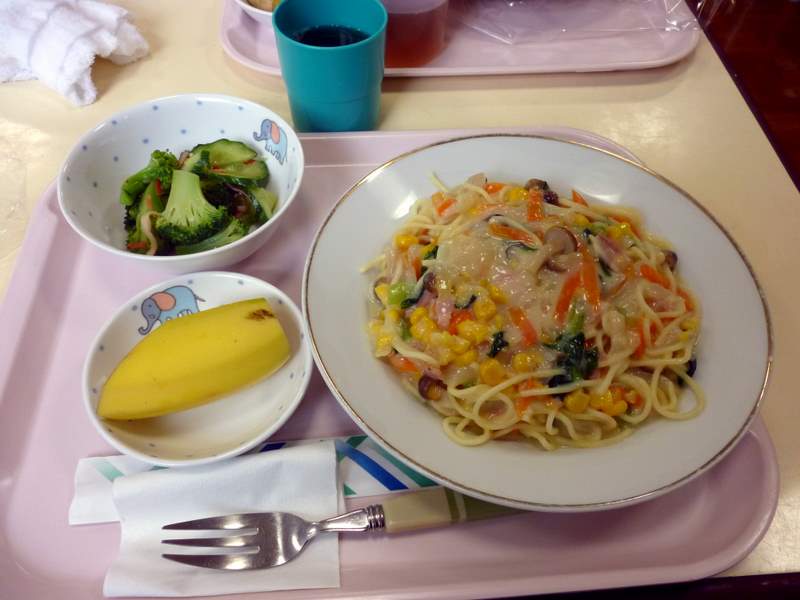Hidden in the historic Gion district notorious for spotting Geisha and experiencing traditional Japanese culture, you will find the Zenryuji Nursery School. With Zenryuji Temple to the West and Yasaka Shrine to the North, it is located in a special place. Commuting here with fellow KCJS-er, Trisha Martin and being greeted by a sea of shining, smiling faces of the children at the nursery school every Tuesday was truly a pleasure. No matter how difficult my morning Japanese lessons, or how tired I was, the children, little bursts of energy, always refreshed me.
All throughout high school, I worked at an afterschool childcare program for K-4th graders, so I assumed that this Japanese equivalent would be rather similar. However, the differences were striking. I’ve never seen a group of such well-behaved children in my life. From putting away their backpacks to folding their clothes, these young children, mostly 4-6 year olds, performed these tasks with almost military efficiency with only a short prompt from their teacher. Before every meal, they wash their hands (twice!) and sing a song showing appreciation to God and their parents for providing the food. After every meal, they brush their teeth and neatly put away their chopsticks and other eating utensils without being asked. I constantly question whether these little creatures are human beings or robots!
After a couple of visits, I quickly became accustomed to their daily lunch routine and subsequent nap schedule. However, for about a month, Trisha and I still felt like outsiders. We felt as though we were an interruption to the smooth flow and efficiency of the operations at this daycare rather than helpful volunteers. And then, unexpectedly, the awkwardness dissipated. The other teachers started asking us to do small chores, such as clean off the tables and even plan little games to entertain the kids while their lunch was being set-up. The kids themselves also started treating us differently, approaching us without fear and freely talking to us as friends rather than foreign specimen. While the children’s strong kansai dialect and simple sentence structures challenge our language comprehension abilities, hand and facial gestures facilitate our communication.
My experience volunteering at the Nursery School has definitely opened my eyes to another side of Japan. Through the children’s eyes, I can see a picture of Japan that is not clouded by excessively polite speech and tatemae. I truly value their insights and being able to see how Japanese education and childcare transforms these little people into Japanese citizens.
[Update]: Today was my last day at the daycare. The children have a performance this weekend for their parents, so I got to witness the dress rehearsal…such organized chaos!

